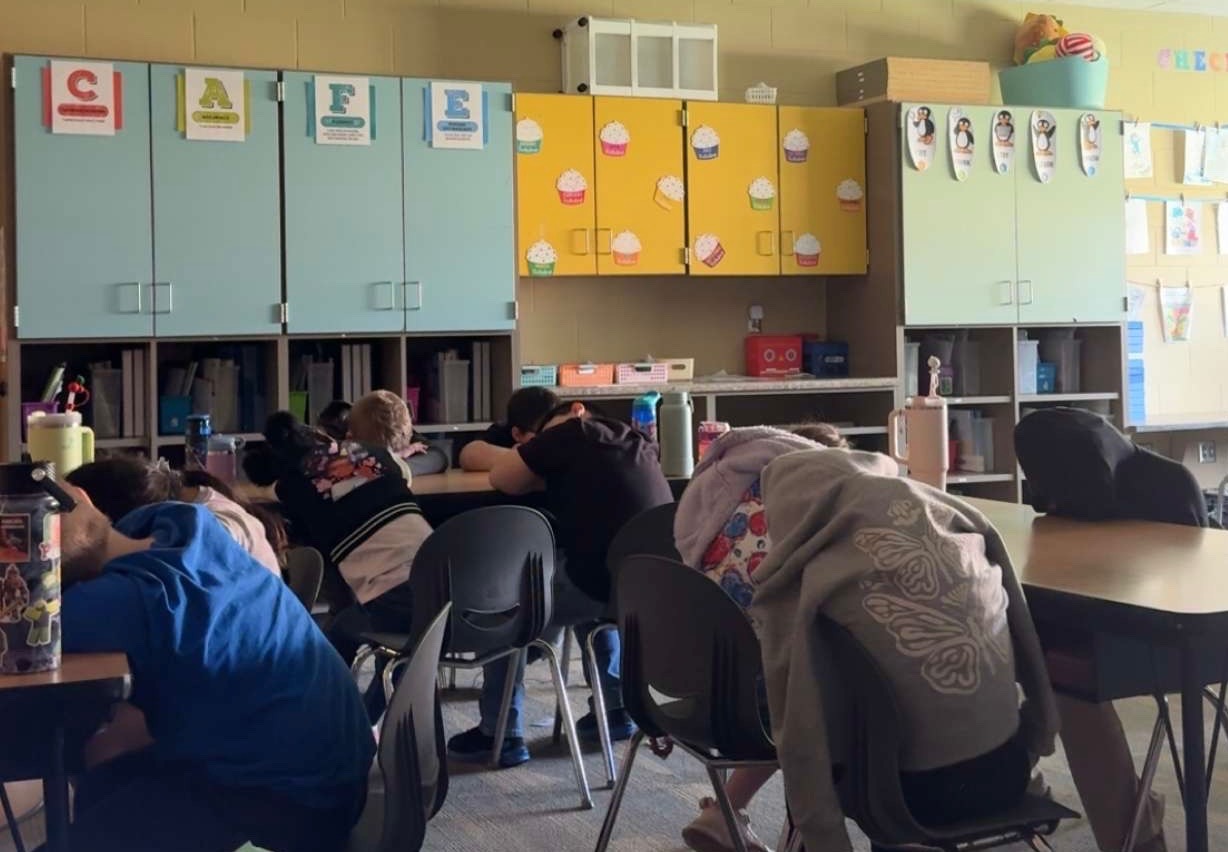
Field Day. You know, the day we all circle in red on the calendar because it sounds like fun until you’re living it... sweaty, sun-drenched, surrounded by flying foam noodles, scattered Popsicle sticks, and kids who somehow consumed seven times their normal sugar intake before 10 a.m.
So there we were. Field Day: survived. Barely.
We walked back into the classroom, and I naively thought, All right, we’ll cool down, grab some water, maybe do a calm reflection activity. However, my students did not do a calm reflection activity. They became tiny whirlwinds of chaos. Spinning. Laughing. Tapping pencils in a rhythm only they understood. Talking louder than necessary about things that made no sense.
And that’s when it happened. I did the one thing I usually cringe at. The thing I silently judged teachers for back in my early, idealistic days. I marched to the light switch and turned it off.
“Heads down!”
And as though a magical spell had been cast across the room… there was silence. Actual silence. Heads down. Hands folded. Feet still. And in that moment, I thought, Can we just stay like this until dismissal?
Of course, we didn’t. Because that’s not who I am. But wow, was I tempted.
And while they sat with their heads down, I sat with my thoughts. I asked myself why this tactic—this flick-of-the-lights, command-style silence—always works, but never feels good.
And here’s what I came up with: It works because it’s clear. It works because it signals a hard reset. It works because students, especially after unstructured time, sometimes crave structure they can count on.
But it doesn’t feel good because it feels reactive, not responsive. It feels like control instead of connection. And it feels like a missed opportunity to lead with compassion.
So, here’s the shift I’m working on: Next time, when things spiral after a high-energy event, I’ll still seek a reset, but maybe I’ll frame it differently.
Instead of, “Heads down,” maybe I will try, “Let’s close our eyes and take five deep breaths together.” Or, “Put your heads down if you need a moment. Let’s give each other some space to come back to calm.” Or even, “Let’s sit silently for one song. I’ll pick something peaceful.”
Because silence isn’t the enemy. How we invite it makes all the difference.
Field Day tested my patience and reminded me I’m human. But it also gave me a moment of reflection, a pause to ask, How do I want students to remember the end of our year?
Not as the day their teacher snapped and turned off the lights. But as the day she noticed things felt off—and chose to lead with grace.
Want to try a fresh way to reset the energy after a chaotic activity? Try a Silent Song Reset or a Mindful Minute. I’ve included a calming playlist and quick reflection prompts to help.
This article might be missing links that were included at the time of publication.

